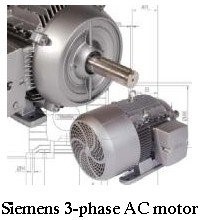During the constant worldwide campaign to make the planet as clean as possible, electric vehicle (EV) drivers have an improving chance of driving cars with fewer moving parts. One of an EV’s greatest advantages is a quiet motor, which gives off an average of 100% torque at zero RPM. But, if you’re going to make the transition to an EV, how do you know what kind of motor will help your vehicle last the longest?
EVs use either an AC or a DC motor, the difference between the two usually showing in how many volts at which the motor can run. A DC motor will likely run between 96 and 192 V, while an AC motor is probably a three-phase motor that runs at 240 V. According to How Stuff Works, DC installations lean more on the inexpensive side, so they may be the better option for someone still unsure about EVs but willing to try them. Usually covering the 20,000- to 30,000-W range, DC motors also allow you to overdrive them, meaning that a 20,000-W motor would briefly accept a higher wattage and “deliver five times its rated horsepower.” The driver’s only concern would be the building up of heat that too much overdriving can cause. If a driver doesn’t push an AC motor too far, they shouldn’t have too much to worry about in terms of longevity.
Advantages of a DC motor for anyone skeptical of EVs also include more widespread availability and easy installation. One of the standout DC devices, the DC Series wound electric car motor, has a strong reputation partially because it also works as a motor in electric drills. When it comes to cars, the wound electric motor offers all of its torque from a standstill. Another reliable source, the EV Photo Album, cites the Advanced DC Serious wound motor as the most popular of its kind.

Source: PGH Environmental.
As for AC motors, they’re usually more adaptable if a driver has a certain size, shape, or power rating in mind, as they work with nearly any industrial three-phase motor. Because of the AC motor’s regen feature, an EV’s AC motor can serve as a generator and bring power back to its batteries. While a three-phase motor relies on a DC power source, an inverter is present instead of a DC system’s controller. An AC motor will handle rougher terrain more smoothly and allows more acceleration. While this type is pricier, the benefits appeal to a wider audience and could potentially help your EV last longer in general.
While deciding which EV motor to use is largely a situational decision, both AC and DC motors help lead to a healthier planet.
Source: Electric Cars are for Girls, EV Photo Album, How Stuff Works, EVgo
Advertisement
Learn more about Electronic Products Magazine





